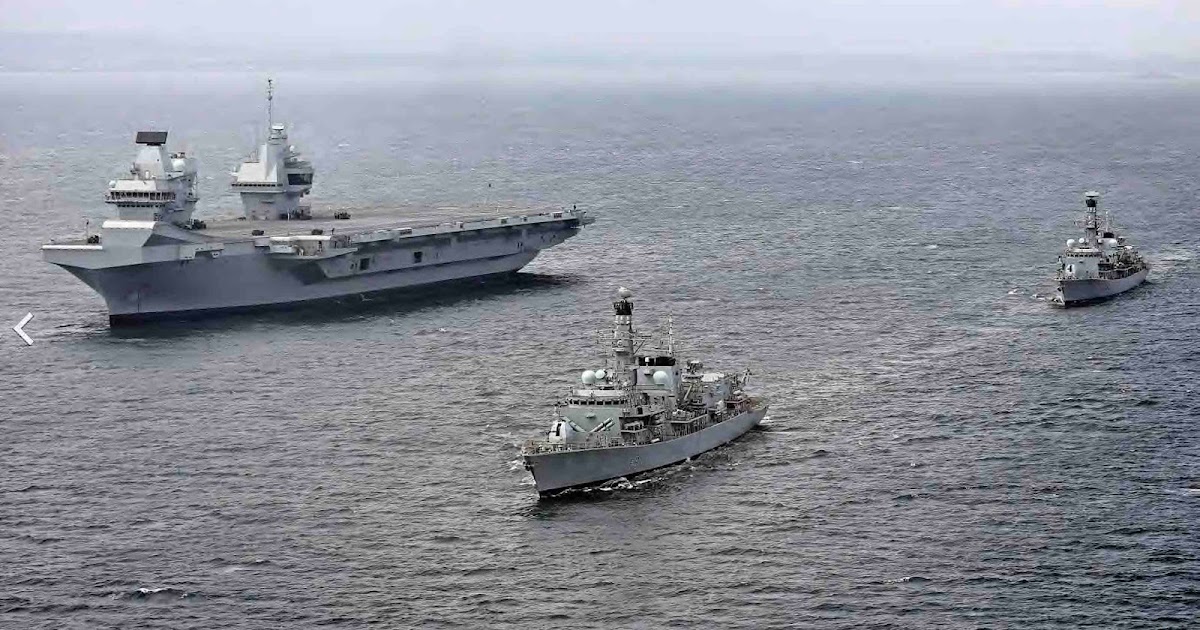
Royal Navy aircraft carrier HMS Queen Elizabeth, leaves Rosyth, escorted by two frigates
By Vikas Gupta
Defence News of India, 8th Jan 2024
Underscoring India’s growing defence relations with the United Kingdom (UK), Defence Minister Rajnath Singh will leave on Monday for a two-day visit to London.
He will be accompanied by a high-level Ministry of Defence (MoD) delegation, comprising of senior officials from the Defence R&D Organisation (DRDO), service headquarters and the Department of Defence Production.
Rajnath’s key meeting will be his bilateral talks with his UK counterpart, Secretary of State for Defence Grant Shapps. They are expected to discuss a wide range of defence, security and industrial cooperation issues.
Relations between the two countries are guided by the India-UK Comprehensive Strategic Partnership, in the overall framework of the India-UK Roadmap 2030.
The inaugural India-UK 2+2 Foreign and Defence Dialogue was held in New Delhi on October 16 last year.
Fresh impetus has been imparted to India-UK defence relations by cooperation in designing and building India’s third aircraft carrier, a jet engine for India’s indigenous medium combat aircraft and a diesel power pack for the Indian Army’s futuristic light tank.
Powering India’s aircraft carrier
New Delhi and London are moving closer towards developing marine electric propulsion for the Indian Navy’s “second indigenous aircraft carrier”, or IAC-2. The Indian Navy, which was earlier looking towards the US for design expertise, technical know-how and operational practices is now considering the advantages of working with the Royal Navy.
Like the Royal Navy’s two Queen Elizabeth-class (QE-class) aircraft carriers, the IAC-2 is likely to be a 65,000-tonne, conventionally powered carrier that embarks 50-plus aircraft, including ten helicopters.
Since the Royal Navy carriers are significantly smaller than the US Navy’s 100,000 tonne, nuclear powered supercarriers, it is becoming ever more likely that India might choose the Rolls-Royce MT30 power pack that drives the QE-class.
Selection of the MT30 power pack for the IAC-2 could set the stage for Rolls-Royce turbines to power many of the Indian Navy’s next generation of warships, instead of the American, Russian and Ukrainian turbines that India currently uses.
At the second meeting of the India-UK Electric Propulsion Capability Partnership Joint Working Group (EPCP-JWG), in New Delhi on November 21, the two sides exchanged information on electric propulsion, while discussing industrial cooperation in this field.
Jet engine co-creation
British engine-maker Rolls-Royce has offered to work with the DRDO in designing and developing jet engines for the Indian Air Force’s (IAF’s) Advanced Medium Combat Aircraft (AMCA), which will form the backbone of the IAF’s fifth-generation fighter fleet in a decade.
Rolls-Royce has told Defence News of India that the new engine would be a greenfield design and would take a decade to create and operationalise.
Combat aircraft engine makers, of which there are only a handful, are unwilling to share the intellectual property (IP) that accrues from a co-creation project. The US and India had begun a project to co-develop a fighter engine under the Defence Trade and Technology Initiative (DTTI), but the American firms decided against sharing IP.
Similarly, French engine maker, Safran, was unwilling to cooperate with the DRDO to co-create the Kaveri engine.
Currently, the IAF, the Indian Navy and Hindustan Aeronautics Limited (HAL) operate some 750 Rolls-Royce aero engines.
These include the Rolls-Royce Adour 804/811 which has powered the IAF’s Jaguar deep penetration strike aircraft.
In the 2000s, HAL began manufacturing the Hawk trainer in Bengaluru, while also building the Rolls-Royce Adour 871 engines that power it.
Tank engines against China
Following China’s intrusions into Eastern Ladakh in 2020, the Indian Army found itself confronting Chinese armour on that flat, high-altitude desert border. Consequently, India’s defence design and production establishment has swung into action building a new 25-tonne light tank for the Indian Army.
Rolls-Royce subsidiary, MTU, which has been acquired by Rolls-Royce Power Systems, is keen on providing its MB 838 engine to power the light tank.
Rajnath Singh is also scheduled to call on UK Prime Minister (PM) Rishi Sunak and meet with former PM David Cameron, who is now UK’s Secretary of State for Foreign, Commonwealth & Development Affairs.






